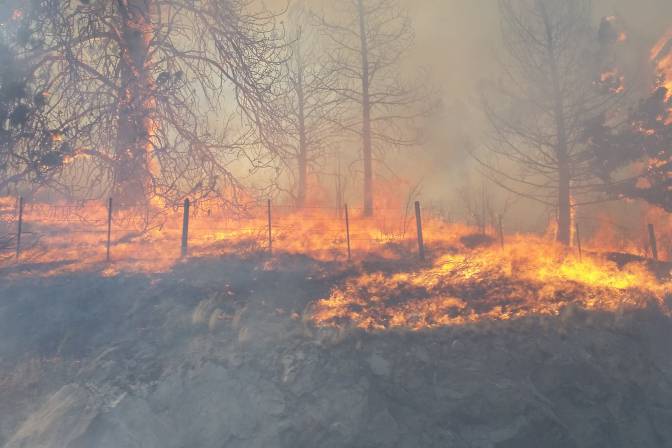The 2015 southern interior fire season has been a crippling one with blazes consuming homes, forcing thousands to flee.

READ MORE: 30 homes destroyed in Rock Creek fire; now 3,750 hectares
While the season isn’t over yet, Wildfire Management B.C. says the numbers to date show this year has been busier than average.
READ MORE: Oliver man loses “dream home” in Wilsons Mountain Fire
“To date we’ve had 455 fires in the Kamloops Fire Centre, burning 10,308 hectares,” says fire information officer, Max Eirkner. “On average for the last ten years, we see 7,377 hectares burned and 438 fires (per year).”
Last year was unusually mild, with only 315 fires and 3,567 hectares burned.
WATCH: A fire behaviour analyst says factors like drought-stricken dead trees are helping wildfires become more dangerous and harder to control, making blazes burn hotter and move quicker. Carter Evans reports.
Fire officials say the extended hot dry weather is one of the reasons for the intense fire season, but the biggest factor has been lightning activity.
The Testalinden Creek Wildfire, burning west of Oliver, is the largest blaze in the region. It’s already burned 4,375 hectares and is 80 per cent contained.
READ MORE: Testalinden Alert expands again; crews battle fires throughout region
While this season is busier than the ten year average, it pales in comparison to 2009 when there was 1,012 fires and 50,749 hectares burned.
- London Drugs says it can’t fill new prescriptions amid recovery from ‘cybersecurity incident’
- City of Vancouver hopes to have details on Canucks viewing parties ‘in the coming week’
- Township of Langley applying for childcare funds for 400 new spaces
- Demko ruled out for Game 1, Silovs staying ready, Vancouver head coach says





Comments